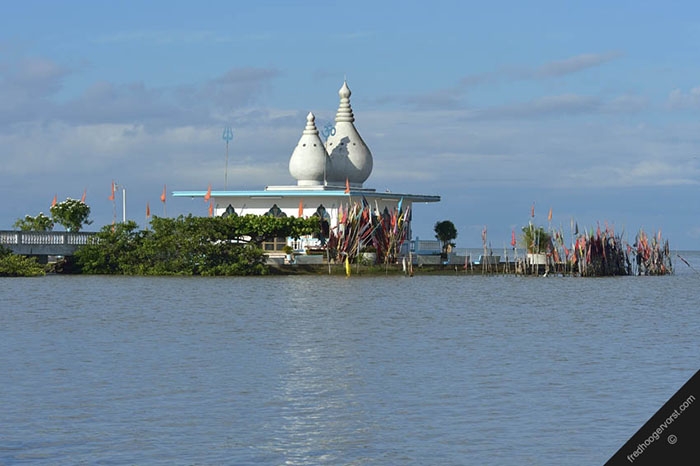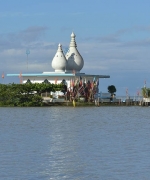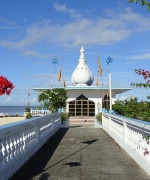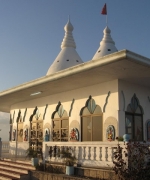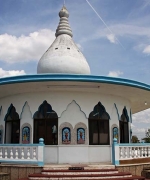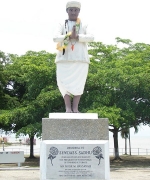The Temple In The Sea (Sewdass Sadhu Shiv Mandir)
About The Temple In The Sea (Sewdass Sadhu Shiv Mandir)
On January 1st 1903, Sadhu was born in Benares by the Ganges River, India. When he was four, his family migrated to Barrancore Village (modern day Brickfield), Trinidad where they would toil at the Waterloo Estates. Although he was a poor man, it is said he returned to his homeland on pilgrimages to Bhaarat every few years. On one such journey, he was so touched after receiving a benediction by a pundit that he vowed to build a mandir when he returned to Trinidad. It is believed that the Gulf of Paria was like the Ganges to him, and as such he built the temple by the seashore. This task proved difficult as he had use of only a bicycle and a bucket to transport materials. It was nevertheless completed in October 1947 and during the following 4 years, poojas were performed by Hindus from Waterloo and the surrounding villages.
It was constructed at MacMillan Park, private land owned by Tate and Lyle Limited, a leading sugar cane company. When they became aware that the land was being used in 1952, they demanded that Sadhu remove the structure. When he refused, it was demolished by court order and he was fined $500 and imprisoned for 14 days for trespassing. This did not stop him from rebuilding the temple that same year, this time 500 feet into the sea in the Gulf of Paria on reclaimed land.
This time he acquired a truck to move materials for an even bigger undertaking, a prayer complex in the sea consisting of a pooja area, a kitchen and rest room. He collected broken bricks from a nearby factory and laid them by hand using sand and cement, a labour that took him hours on evenings after work during low tides. This formed the pedestrian causeway to the temple. One day while working on this stage of the walkway, the tide came in and trapped the truck, leaving it irreparably damaged. This did not stop Sadhu, who once again transported materials on the handlebars of his bicycle with two buckets. The foundation for the temple was made using oil drums from another local business, which were filled with concrete and tied with steel. Stones were used in making the base for the island, and the temple's octagonal main structure made of concrete. The temple was dedicated to Lord Shesha Naaraayana, the one who dwells in the sea and filled with murtis of Ganesh, Siddartha, Shiva and many other Hindu deities.
The temple stood for many years, enjoyed by many before Sadhu's death in 1970. It sadly became neglected after his death and was reclaimed by the sea after years of erosion, which upset both Hindus and non-Hindus alike. In 1994, local businessmen rallied together to have the temple built for a third time, and in conjunction with the Government, the temple that still stands today began construction in 1994. Upon completion in 1995 it was consecrated as the Sewdass Sadhu Shiv Mandir with new pier allowing persons to have access during high tide and a statue of Sewdass Sadhu, proudly standing on the shore.
The site is an active prayer site, often used for weddings, pooja ceremonies and cremations as the Waterloo Cremation Site is next to the grounds of the temple.
Map
Reviews (0)
0 Reviews for The Temple In The Sea (Sewdass Sadhu Shiv Mandir)
Contact
- No contact information available
